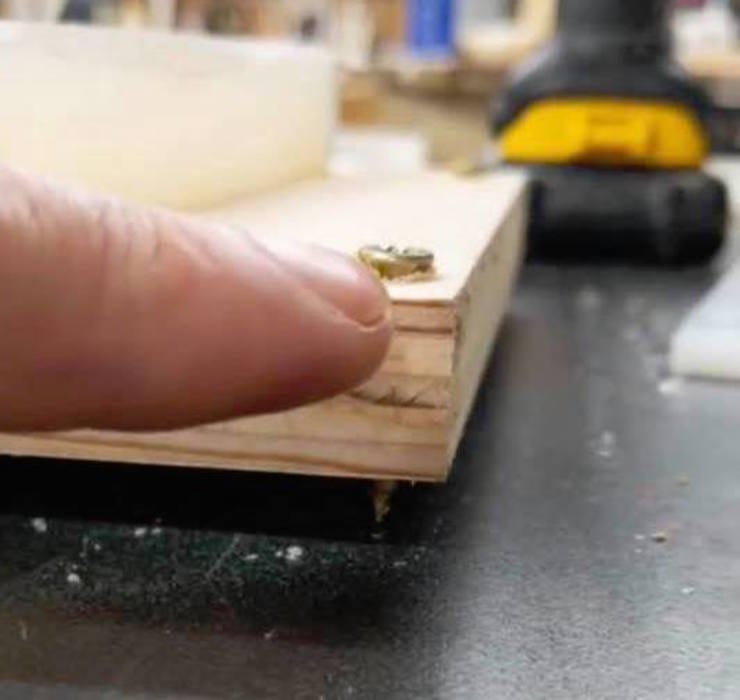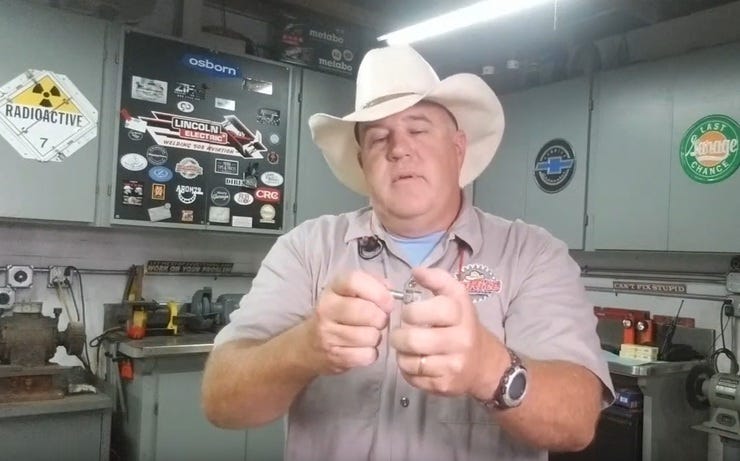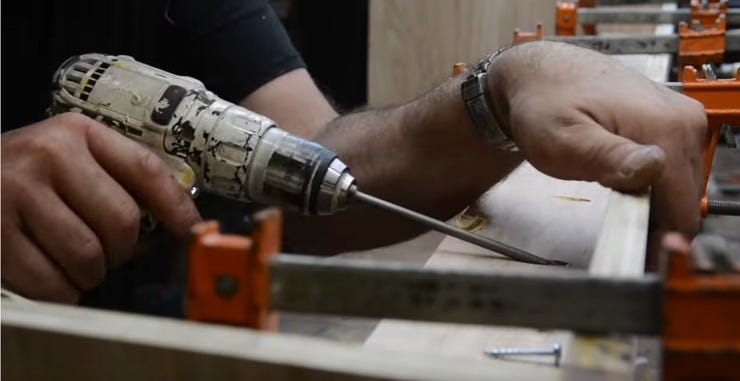Gareth's Tips, Tools, and Shop Tales - Issue #19
Mold Leveling
From Andy Birkey comes this great tip. When he pours a cast into a mold with a lot of real estate, he places the mold on a board and sinks four screws into the board like table legs. By adjusting the screws he can make sure the casting resin is perfectly level in the mold.
Machinist Tips Blitz
If you search on #tipblitz19 on YouTube, you'll scoop up this year's shop tips round-up from dozens of machinist and metalworking channels. There are some real gems in here, like the above, from DoRite Fabrication. If you're welding on the head or shank of a bolt and you get a "welding booger" (technical term) on the threads, a nut will be blocked or seize up if you try and screw it over the damage threads. You can fix this by temporarily threading on a couple of nuts as a mask to protect the threads. Just don't weld the nuts together!
Gluing then Screwing with a Kreg Jig
In this recent DiResta video, Jimmy talks about how, when he is using a Kreg jig and creating pocket holes, as is common practice, he combines wood glue with the pocket screws. But he waits ten minutes or so for the glue to start to set up after clamping, before adding the screws. If you clamp, glue, and screw immediately, the clamping pressure against the glue can cause the workpieces to travel off-square.
The Art of Freeforming Circuits
Donald Bell's Maker Update first introduced me to hardware engineer and maker, Mohit Bhoite, and now to this wonderful Eyeo talk by Mohit. I've been fascinated by, and dabbled in, free-form electronic circuits for decades. This is where you don't use a proto-board or printed circuit board to build a circuit on, you build it "in the air," simply soldering components together (and often to a soldered-together, circuit-conducting metal frame) to create a circuit that ends up looking like a little sculptural object. Creative and talented engineers like Mohit take this technique to a level where these circuits really do become beautiful sculptural objects. In his Eyeo presentation, Mohit talks about the origins of this form of high-tech making, what skills, tools, and materials you need, and he shows his techniques and a galley of his work.
Building a Simple Propane Forge
In a recent I Like to Make Stuff video, Bob Clagett shows how he made a simple tabletop metal forge using little more than fire brick and welded angle iron. It's not the smoothest build he's done. He ends up having made several mistakes (e.g. trying to run the propane input from the side rather than the top), and he spends a lot of time reminding us to look at the other linked projects he's drawing from. I like when makers are open about their mistakes and show projects that aren't perfect. Although he uses welding, you could get a decent result with bolting a frame together. The point is to show that having a basic tabletop forge is within easy reach of most DIYers.
The Mesmerizing Flourish of "Life Hacks" Videos
I don't know about you, but I have a bizarre fascination with the endless "life hacks" videos found on YouTube, Instagram, and Twitter (an obsession I've written about before). In these videos, all of the petty day-to-day frustrations of our lives are alleviated with a hot glue gun, or a well-placed spoon, or repurposed drier sheets and some junk from the trash. There is something naively charming and aspirational in these videos. They tickle that part of our brains which crave easy solutions to life's problems and they generate those little "ah-hah" moments of "why didn't I think of that?" It is this same basic impulse that draws me to collecting DIY tips. While some of these video tips are straight-up sleight of hand cons, most of these "hacks" do work. Sort of. For example, yes, you can effortlessly remove the skin of a peach if you dunk it in a bath of boiling water and then plunge it into a bowl of ice water. But are you really going to do that each time you want a piece of fruit for a snack? But amongst these collections, I almost always find tips that are actually useful; some are downright ingenious.
Here's a recent example of such a video. The above image shows how you can remove the skin of a fish by pouring some hot water over the skin first.








